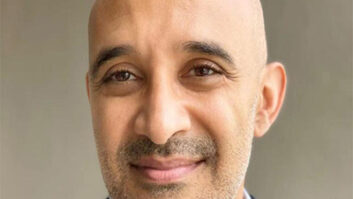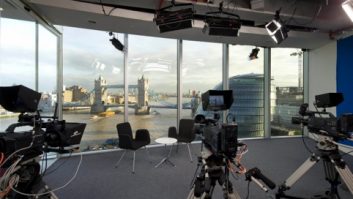
Why is the integration of IT and broadcast workflow still such a challenge? The keynote provided by the Director of Media Asset Capital,Jeremy Bancroft, kicks off our coverage of TVBEurope’s IT Broadcast Workflow 2010 conference.
If you build a new broadcast infrastructure from the ground up today, would you consider using a large amount of traditional technology or IT solutions to power the bulk of facilities? The case studies featured at throughout the conference provided an emphatic answer.
Chair for the day Jeremy Bancroft, director, Media Asset Capital, noted that more IT professionals were joining broadcasters, many as CTOs, bringing IT skills and experience of large IT integration projects.
“But if that’s the case why is the integration of IT and broadcast workflow still a challenge?” Bancroft asked. “Most projects run into difficulty although these issues are kept quiet.”
Bancroft suggested problems arise because of very specific customer requirements. “Broadcasters are a special needs customer,” he joked. Some have unrealistic expectations from systems in terms of timescale and cost. They all feel completely special and want something unique. Maybe that’s true but it does cause issues for vendors.”
The discrete boundaries between previously individual broadcast functions — MAM, automation, workflow, transcoding, delivery to multi-platforms – are blurring which makes diagnosis tricky.
“For example, unless the broadcaster is very specific I don’t know what a MAM means,” said Bancroft. His point was born out by Chellomedia’s Rick Phelps, who later declared that the refresh of its DMC playout hub contained no MAM since the automated solutions now in place delivered that functionality.
Then there’s the question of who you turn to, the SI or a vendor? Traditionally broadcasters have approached SIs as a single point of contact then realised that system integrators are powerless to deliver a project without vendors doing most of the work and being fully committed to it. If a vendor is not fully involved then the project is unlikely to get off the ground.”
Broadcast systems have tended to be hardware heavy yet for media organisations considering their total of ownership this may no longer be a suitable option. “Large hardware requirements mean more power therefore more heat and air-conditioning, all of which increase the broadcaster’s carbon footprint,” said Bancroft. Environmental issues that hurt a company’s bottom line are of significant concern to international broadcasters.
It is possible that major studios will start to charge broadcasters for tape delivery as they seek to cut the cost of physical shipping. There’s an expectation that delivery should be on file and broadcasters need to be ahead of the game if they are not to lose out.
“At this same conference last year people were discussing concepts and plans,” recalled Bancroft. “Now we are now debating project deployment and assessing results. This change is happening very fast.
Bancroft used an analogy from the newspaper industry to sum things up. “Anyone today considering launching a print publication using hot lead would be considered mad. So perhaps we should be putting any broadcaster in the same bracket if they use conventional technology – especially on greenfield sites.” – Adrian Pennington







